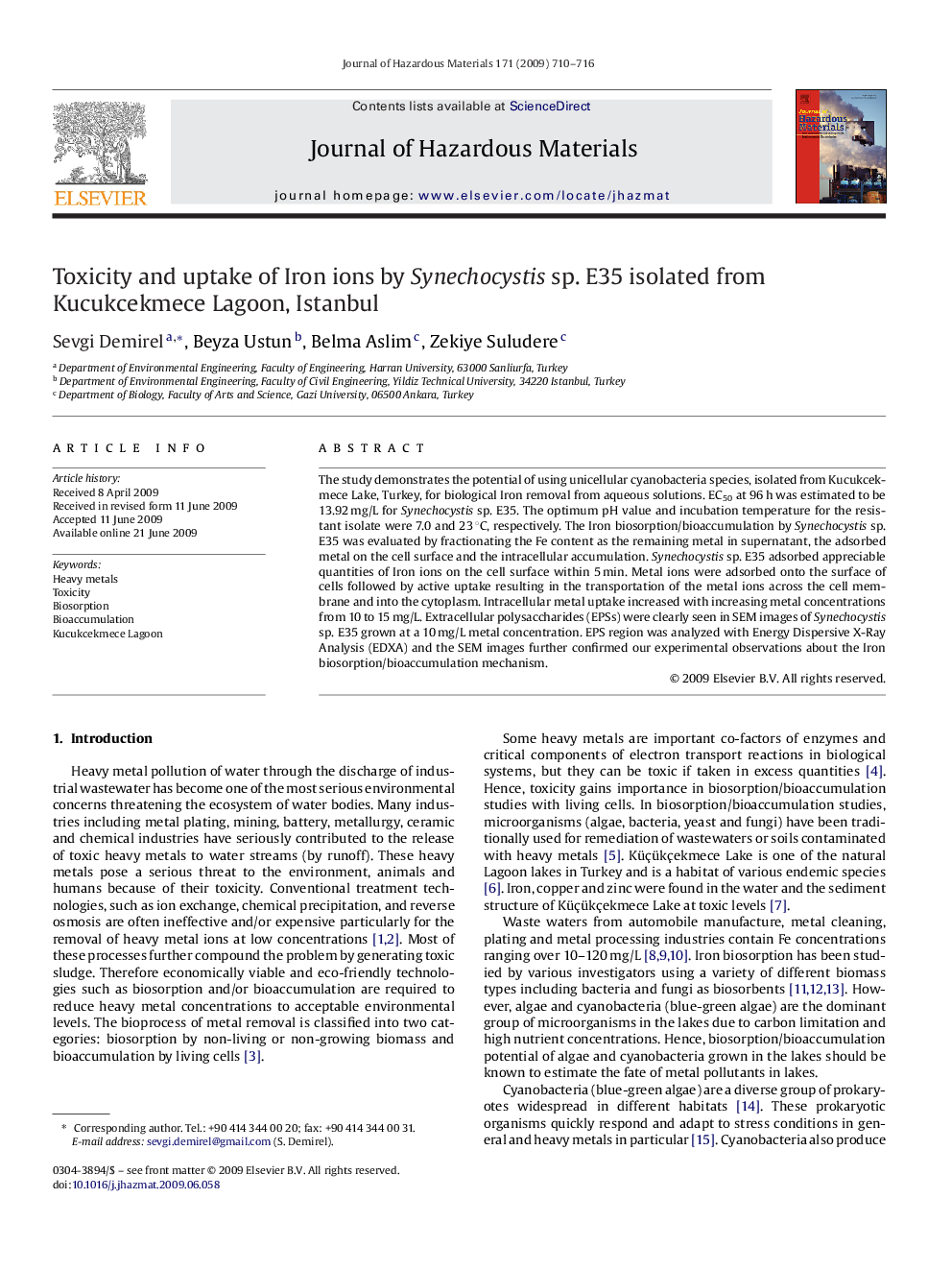| Article ID | Journal | Published Year | Pages | File Type |
|---|---|---|---|---|
| 581193 | Journal of Hazardous Materials | 2009 | 7 Pages |
Abstract
The study demonstrates the potential of using unicellular cyanobacteria species, isolated from Kucukcekmece Lake, Turkey, for biological Iron removal from aqueous solutions. EC50 at 96 h was estimated to be 13.92 mg/L for Synechocystis sp. E35. The optimum pH value and incubation temperature for the resistant isolate were 7.0 and 23 °C, respectively. The Iron biosorption/bioaccumulation by Synechocystis sp. E35 was evaluated by fractionating the Fe content as the remaining metal in supernatant, the adsorbed metal on the cell surface and the intracellular accumulation. Synechocystis sp. E35 adsorbed appreciable quantities of Iron ions on the cell surface within 5 min. Metal ions were adsorbed onto the surface of cells followed by active uptake resulting in the transportation of the metal ions across the cell membrane and into the cytoplasm. Intracellular metal uptake increased with increasing metal concentrations from 10 to 15 mg/L. Extracellular polysaccharides (EPSs) were clearly seen in SEM images of Synechocystis sp. E35 grown at a 10 mg/L metal concentration. EPS region was analyzed with Energy Dispersive X-Ray Analysis (EDXA) and the SEM images further confirmed our experimental observations about the Iron biosorption/bioaccumulation mechanism.
Related Topics
Physical Sciences and Engineering
Chemical Engineering
Chemical Health and Safety
Authors
Sevgi Demirel, Beyza Ustun, Belma Aslim, Zekiye Suludere,
